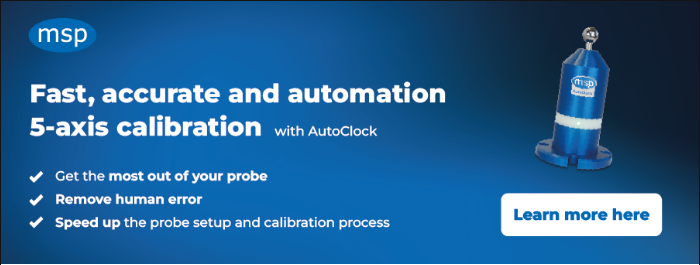Share this
Using A Slip Gauge As part Of Your Manufacturing Process? Read This Now
by Hannah Brown on May 30, 2022 4:33:00 PM

Slip gauges are as integral to CNC machining as spirit levels are to construction. They’re inexpensive, relatively easy to use and they’ve been part of certain CNC machining processes for decades. However, if you’ve ever suffered from scrap parts, machine downtime or poor inspection results, it could actually be the slip gauge that is the root of your problems.
So how much is really known about them? How accurate are they? Could they be having a negative affect on your machining process and your parts without you realising?
In this article, we look at slip gauges in more detail and explore whether there is a better alternative for your CNC machine shop floor.
Using A Slip Gauge
Slip gauges (or their gauge block / feeler gauge equivalents) are the universally accepted ‘standard of length’ in the manufacturing and engineering industries. As a result, they are used in the calibration and verification of many different instruments and equipment throughout the CNC machining process.
At MSP, the most common area we see them used is during the probe setup process to determine the location of the Z axis. Here, the known value of the slip gauge is used to calculate the distance between the length bar and the sphere to work out the Z axis result.
How Slip Gauges Cause Error
Using a slip gauge is a manual process completed by an operator or machinist. Achieving optimum accuracy in this process is a highly-skilled procedure which is difficult and time-consuming and carries the risk of introducing human error. The involvement of multiple operators increases this risk of error as it’s possible they could end up with different results. And as slip gauges offer little help in the way of validation, it is impossible to know which result is correct or not.
Let’s look back at the probe setup process and determining the location of the Z axis. If the result here isn’t accurate, this starts a chain reaction of errors which ripple down throughout the CNC machining process and affect part accuracy - potentially leading to failed inspections, rework, and high scrap levels.
Look at the diagram below to see just how far these errors can travel down through production.

If your CNC machining process doesn’t require the utmost accuracy or need to achieve tight tolerances, you can probably get away with using a slip gauge. But the same can’t be said for the advanced manufacturing industry, where precision is crucial to ensure the successful machining of valuable components to micron-accurate tolerances.
It’s the manual involvement when using a slip gauge which is the main cause of inaccurate results. So to eliminate this manual aspect, the best thing to do is use an automated tool that does not rely on operator skill.
What’s The Alternative?
MSP’s AutoClock fully automates the process of finding the location of the sphere in X, Y and Z without any manual intervention required. After it is placed in the machine, it can produce a micron-accurate, reliable and repeatable result for measurement of the XYZ axes in seconds.
Stopping errors at the source like this ensures they don’t filter down to your parts and ultimately your quality department. It gives you complete confidence in your CNC machining process.
As well as achieving micron-accurate results, automation provides:
- improved health and safety
- validation of results
- the ability to fully automate your CNC machine shop floor
Next Steps
If you would like to speak to us about how you can move away from using a manual slip gauge in your CNC machining processes, especially when finding the Z axis location, please get in touch or find out more below.
Share this
- August 2025 (1)
- June 2025 (2)
- April 2025 (1)
- March 2025 (2)
- January 2025 (1)
- November 2024 (1)
- April 2023 (2)
- December 2022 (2)
- July 2022 (1)
- May 2022 (4)
- November 2021 (1)
- October 2021 (1)
- September 2021 (2)
- January 2021 (1)
- December 2020 (1)
- December 2018 (1)
- August 2018 (1)
- August 2017 (1)





